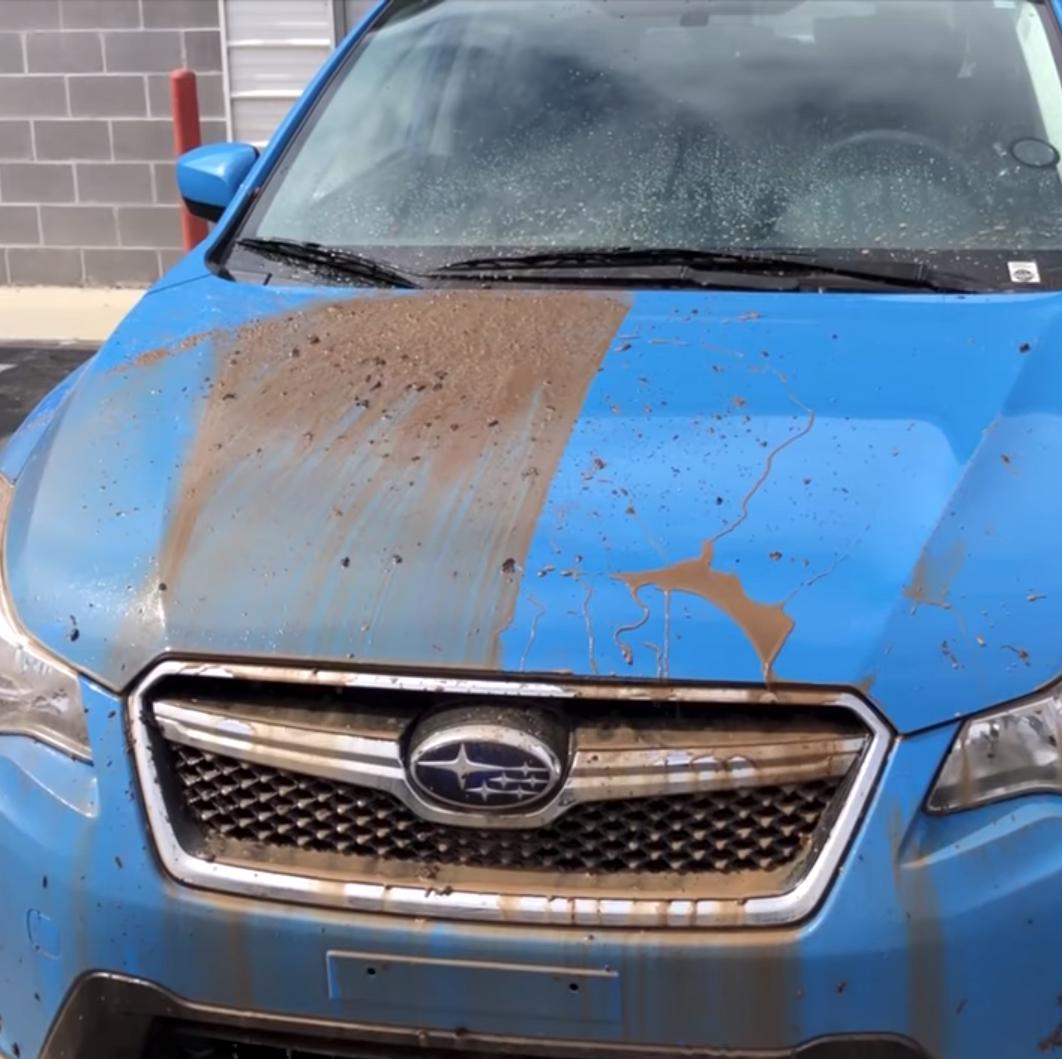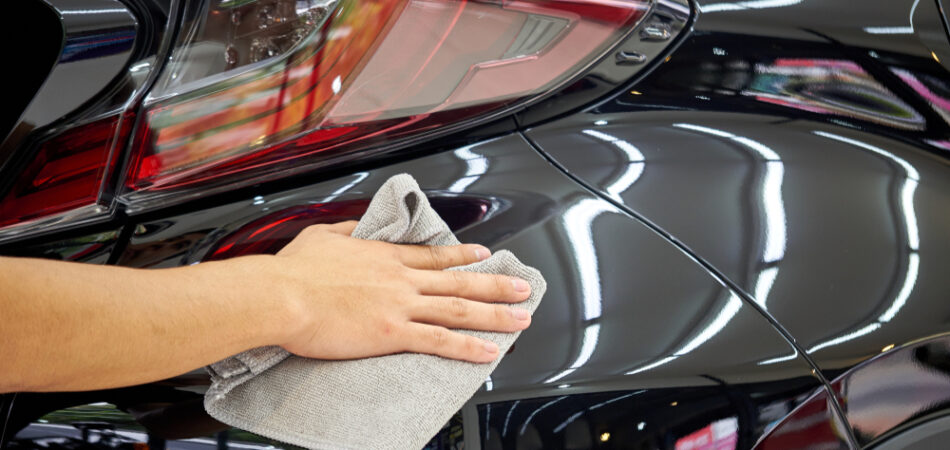Ceramic Layer vs. Traditional Wax: Which Offers Much Better Long-Term Defense?
The argument in between ceramic finishings and conventional wax for vehicle protection has actually gathered significant attention amongst vehicle fanatics and experts alike. Ceramic coatings flaunt remarkable longevity and resistance to environmental factors, yet the intricacy of their application raises inquiries concerning access and functionality.
Overview of Ceramic Layer
Ceramic finish has actually acquired significant appeal amongst auto lovers and detailers alike due to its sophisticated protective high qualities. This innovative innovation is developed to create a durable, hydrophobic guard over a car's paint surface area, considerably boosting its resistance to environmental impurities such as dirt, UV rays, and chemical spots. Unlike traditional wax, which gives a short-term layer of defense, ceramic coatings bond at a molecular degree with the paint, offering resilient resilience-- commonly extending past two years with appropriate upkeep.
The application process entails meticulous prep work of the vehicle's surface area, consisting of cleaning and polishing to guarantee optimum bond. When used, the layer cures to create a robust layer that not only adds depth and gloss to the paint however likewise simplifies upkeep. With its hydrophobic residential or commercial properties, ceramic coating permits water and dirt to glide off even more easily, reducing the frequency of washes and reducing the danger of swirl marks.
Moreover, ceramic finishes are readily available in different solutions, permitting individuals to pick items tailored to their specific needs and choices. Generally, ceramic finish stands for a substantial advancement in paint protection modern technology, supplying exceptional efficiency contrasted to traditional alternatives.
Summary of Conventional Wax
Typically regarded as a staple in automobile care, wax offers as a preferred selection for those seeking a simple method to boost and shield their car's paint - ceramic coating. Automotive wax normally comprises natural ingredients, such as carnauba, or synthetic substances, created to produce a protective layer on the surface area of the paint. This layer not only boosts the lorry's gloss and shine but also supplies a barrier against environmental contaminants
The application of wax is generally user-friendly, making it accessible for both specialists and DIY enthusiasts. It can be used by hand or device, permitting convenience in the detailing process. As soon as used, wax needs a curing duration, after which it hardens to form a protective covering. Wax is also known for its capacity to fend off water, promoting a beading effect that helps in the avoidance of water spots and rust.
Nonetheless, while wax is efficient for improving the aesthetic appeal of a vehicle, it is necessary to keep in mind that the defense it offers may necessitate more constant reapplication contrasted to alternative items, such as ceramic finishes. On the whole, typical wax stays a preferred choice for those prioritizing simplicity of usage and instant aesthetic improvement.
Resilience and Long Life Comparison
While both ceramic finishes and standard wax offer protective benefits for auto paint, their sturdiness and durability vary substantially. Typical wax, normally made from all-natural carnauba or artificial polymers, usually supplies a protective layer that lasts about 3 to six months. This fairly brief life expectancy demands normal reapplication to maintain optimum security.
On the other hand, ceramic finishes are engineered from innovative nanotechnology, creating a covalent bond with the paint surface area. This results in a robust, hydrophobic layer that can withstand for 2 to five years, depending on the item and ecological conditions. The remarkable sturdiness of ceramic layers is connected to their chemical framework, which uses improved resistance to scratches, UV rays, and oxidation.

Defense Versus Ecological Elements
Securing an automobile's paint from environmental aspects is essential for preserving its appearance and worth in time. Cars are regularly exposed to a selection of elements, consisting of UV rays, bird droppings, tree sap, acid rain, and roadway gunk, all of which can jeopardize the stability of the paintwork.
Ceramic coatings give a durable protection versus these environmental assailants. Unlike standard wax, which can degrade swiftly under UV exposure, ceramic finishes create a long lasting, hydrophobic layer that stands up to the unsafe results of sunlight and ecological pollutants. This advanced modern technology creates a chemical bond with the vehicle's surface, providing superior defense that lasts for several years, also in extreme conditions.
In comparison, ceramic coverings keep their safety top qualities longer, dramatically decreasing the threat of paint damages and making certain that the lorry keeps its aesthetic allure. As a result, ceramic layers are significantly recognized as the remarkable choice for long-lasting defense versus ecological variables.
Application and Maintenance Distinctions
The approaches of application and subsequent upkeep for ceramic layers and conventional wax vary significantly, impacting the overall customer experience and efficiency of each item. Ceramic coverings require an even more complex application process, commonly entailing surface area preparation that consists of cleaning, sanitizing, and polishing the automobile. As soon as the surface area is all set, the ceramic covering is applied in a regulated setting, frequently needing expert expertise to make certain appropriate treating and bonding to the paint.

While both products boost car appearance, the longer-lasting security offered by ceramic coatings might validate their preliminary financial investment, despite the even more requiring application procedure. On the other hand, conventional wax remains a prominent selection for those looking for a less complex, albeit temporary, solution.

Final Thought
Finally, ceramic finishings show substantial advantages over standard wax in terms of longevity and environmental security. With a life-span expanding 2 to 5 years and exceptional resistance to UV rays, dust, and chemical spots, ceramic coatings provide an extra effective service for long-lasting lorry maintenance. Although the application procedure may call for specialist proficiency, the resulting expense savings and reduced frequency of reapplication underscore the value of ceramic coatings for those seeking optimal vehicle security.
The debate in between ceramic finishes and conventional wax for vehicle protection has gathered significant interest amongst automobile fanatics and experts alike. Unlike standard wax, which offers a temporary layer of security, ceramic coatings bond at a molecular degree with the paint, supplying lasting toughness-- often expanding past 2 years with appropriate upkeep.
While both ceramic finishes and typical wax offer safety benefits for automotive paint, their toughness and longevity vary substantially. For automobile fanatics important source seeking lasting defense, ceramic coverings present an engaging advantage over standard wax products.
In conclusion, ceramic layers show significant advantages over typical wax in terms of sturdiness and ecological defense.